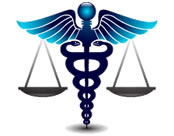

Medical Malpractice Connections

-
Surgical Negligence
- Adrenalectomy (Removal of Adrenal Gland)
- Adjustable Gastric Banding
- Appendectomy (removal of the appendix)
- Cholecystectomy (removal of gallbladder)
- Colectomy (colon resection)
- Common bile duct exploration
- Diagnostic Laparoscopy
- Enterectomy (small bowel resection)
- Enterolysis (removal of scar tissue in the abdomen)
- Esophagectomy (removal of esophagus)
- Fundoplication (surgery for heart burn)
- Gastrectomy (removal of the stomach)
- Gastric bypass
- Gastric Sleeve
- Hepatectomy (resection of portion of the liver)
- Hernia repair
- Hiatal Hernia Repair
- Pancreatectomy (removal of portion of the pancreas)
Laparoscopy
The condition
Diagnostic Laparoscopy is performed to evaluate the inside of the abdomen for a variety of reasons. This procedure may be done because of chronic abdominal pain without a known cause, to look for cancer, or for numerous other reasons.
Symptoms
The patient may have undiagnosed abdominal pain, endometriosis, intra-abdominal blood loss, cancer, or many other possible disorders.
Diagnostic Laparoscopy
The surgeon will make about 3-4 small incisions in the abdomen. A port (nozzle) is inserted into one of the slits, and carbon dioxide gas inflates the abdomen. This process allows the surgeon to see inside of the abdomen more easily. A laparoscope is inserted through another port. The laparoscope looks like a telescope with a light and camera on the end so the surgeon can see inside the abdomen. Surgical instruments are placed in the other small openings and used to explore the abdomen. The surgeon may take biopsies of specific sites if something unusual is found. The surgeon also may cut scar tissue that has entrapped organs. After this has been accomplished, the carbon dioxide is released out of the abdomen through the slits, and then these sites are closed with sutures or staples, or covered with glue-like bandage and steri-strips.
Nonsurgical Treatment
There are other tests which may be used to diagnose the problem, such as CT scans or endoscopy. The doctor should discuss with the patient what the best option will be.
Risks
The primary risks of diagnostic laparoscopy are:
- Infection of the skin at one of the small ports sites
- Bleeding within the abdomen
- Postoperative ileus (the intestines slow down/stop working for several days)
- Persistent abdominal pain
- Injury of intra-abdominal organs
Medical Negligence
The above mentioned risks and complications are known to happen with laparoscopy and such complications do not necessarily constitute deviation from the medical standard of care. The following examples however may be considered as medical negligence.
Injury to intra-abdominal organs. The main mechanism by which injury can be inflicted is the “blind” placement of the laparoscopic ports (trocars). There are several ways by which initial access to the abdominal cavity can be accomplished. It is the surgeon’s obligation to use the safest possible approach to avoid injury to intra-abdominal organs taking into account, prior surgeries, obesity, infection etc.
| Top of page |
| Home | Medical Malpractice Attorneys | Medical Experts | Medical Negligence | Services | Statute of Limitations | About Us | Contact Us |